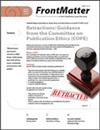不同生命阶段、性别和种类的寡妇蜘蛛的耐热性(蜘蛛目:蛛科)
IF 0.9
3区 农林科学
Q3 ENTOMOLOGY
引用次数: 0
摘要
温度在很大程度上决定了变温动物的生理和分布。极端环境和所遇到的温度范围会限制持久性。此外,热耐受极限被认为是限制入侵物种分布的因素之一。临界热最大值(CTMax)和临界热最小值(CTMin)是分别用于定义上下限热容的常用指标。CTMax和CTMin边界内的温度构成热容范围。在这项研究中,我们测试了两种本地物种(Latrodectus hesperus Chamberlin & Ivie, 1935和L. mactans (Fabricius, 1775))和一种入侵寡妇物种(L. geometricus CL Koch, 1841) (Latrodectus Walckenaer, 1805)之间的耐热性是否存在差异。我们分别测试了不同生命阶段和性别对热的耐受性是否不同。利用物种分布模型,我们还测试了极端温度或温度范围是否最准确地与美国目前的物种发生情况相对应。我们假设几何Latrodectus具有较低的热耐受范围,并且最低温度将最大程度地影响它们目前的分布,因为它们可能起源于更接近赤道的气候。我们发现CTMin不随发育阶段而变化,但在雄性中最高。结果表明,几何L.(3.2, 51.5°C)和mactan L.(1.9, 52.4°C)的CTMin和CTMax均高于橙皮L.(-1.9, 49.6°C)。雄性的热耐受范围也较窄。最后,我们发现表现最好的分布模型是将最低温度与L. geometricus的出现相关联的模型。本文章由计算机程序翻译,如有差异,请以英文原文为准。
Thermal tolerances of different life stages, sexes, and species of widow spiders (Araneae: Theridiidae)
Temperature strongly shapes the physiology and distributions of ectotherms. Environmental extremes and the range of temperatures encountered can limit persistence. Further, thermal tolerance limits are thought to be one of the factors limiting the distributions of invasive species. The critical thermal maximum (CTMax) and critical thermal minimum (CTMin) are metrics frequently applied for defining upper and lower thermal tolerances, respectively. Temperatures contained within the boundaries of the CTMax and CTMin comprise the thermal tolerance range. In this study, we tested whether thermal tolerances differed between two native (Latrodectus hesperus Chamberlin & Ivie, 1935 and L. mactans (Fabricius, 1775)) and one invasive (L. geometricus CL Koch, 1841) widow species (Latrodectus Walckenaer, 1805). We separately tested if thermal tolerances differed by life stage and sex. Using species distribution modelling, we also tested if thermal extremes or temperature range most accurately correspond with current species occurrences in the United States. We hypothesized that Latrodectus geometricus would have lower thermal tolerance range and that minimum temperatures would most influence their present distributions since they presumably originated from a more equatorial climate. We found that CTMin did not vary by developmental stage, but was highest in males. We found that the CTMin and CTMax of L. geometricus (3.2, 51.5 °C) and L. mactans (1.9, 52.4 °C) were higher than L. hesperus (-1.9, 49.6 °C). Males also had the narrowest thermal tolerance range in the three species examined. Lastly, we found that the highest performing distribution model was the one correlating minimum temperature with L. geometricus occurrences.
求助全文
通过发布文献求助,成功后即可免费获取论文全文。
去求助
来源期刊

Journal of Arachnology
生物-昆虫学
CiteScore
2.20
自引率
10.00%
发文量
34
审稿时长
>12 weeks
期刊介绍:
The Journal of Arachnology publishes scientific articles reporting novel and significant observations and data regarding any aspect of the biology of arachnid groups. Articles must be scientifically rigorous and report substantially new information.
 求助内容:
求助内容: 应助结果提醒方式:
应助结果提醒方式:


